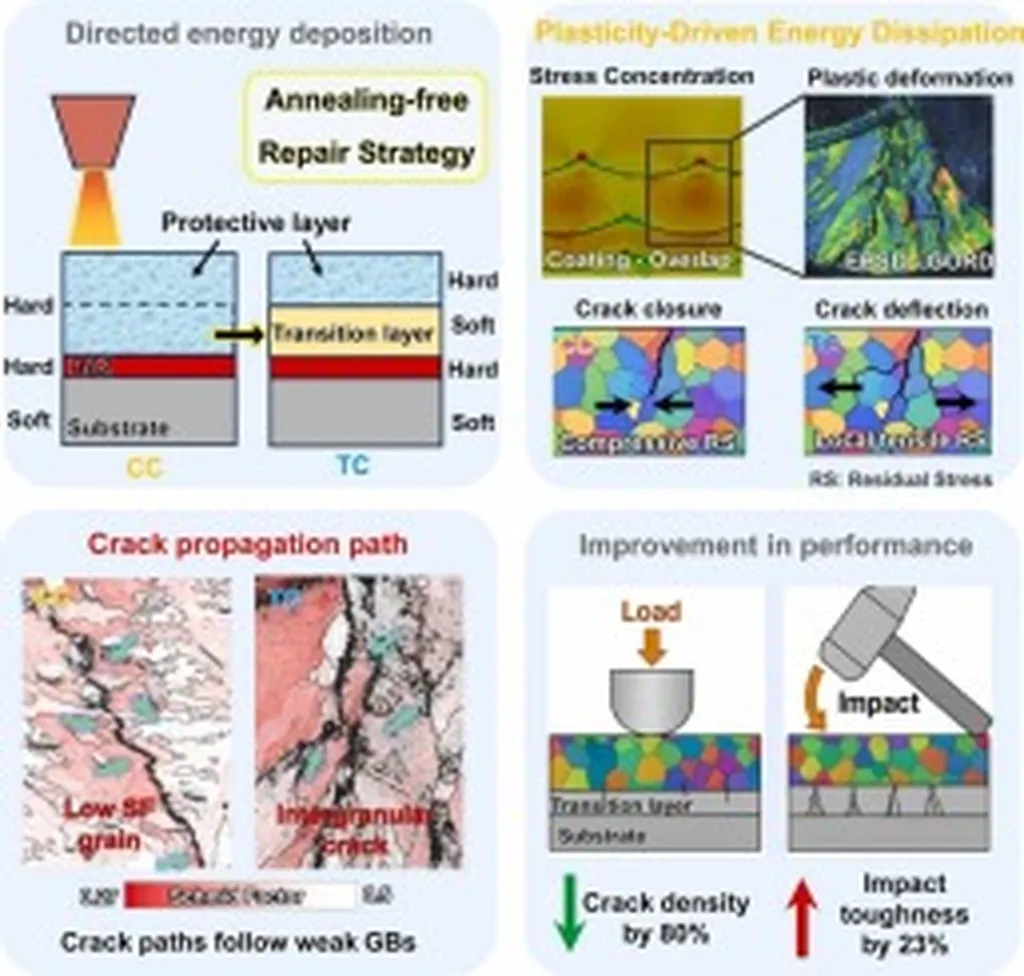In the bustling world of advanced manufacturing, a groundbreaking study has emerged that could revolutionize the repair of high-strength steel components, particularly in the energy sector. Binyan He, a researcher from the School of Mechanical Engineering & Automation at Wuhan Textile University in China, has delved into the intricate world of laser-directed energy deposition (LDED) and post-process heat treatment, uncovering insights that could significantly enhance the durability and performance of critical engineering components.
Laser-directed energy deposition (LDED) has become a cornerstone technology in high-value manufacturing, offering a sustainable approach to repairing large-scale engineering components. However, the process often leaves behind non-equilibrium microstructures and high residual stresses, which can compromise the mechanical properties and stress corrosion resistance of repaired parts. This is where He’s research comes into play, focusing on the repair of Q690D high-strength steel, a material widely used in marine engineering and other demanding applications.
He’s study, published in the Journal of Materials Research and Technology (translated from Chinese as “Materials Research and Technology Journal”), explores the effects of post-process heat treatment on the mechanical properties and fracture behavior of Q690D high-strength steel repaired via LDED with flux-cored wire. The research is among the first to address this critical gap, offering valuable insights into the optimization of repair processes for high-strength steels.
The study subjected repaired specimens to three different heat treatment protocols, each with varying temperatures and cooling methods. Microstructural analysis revealed that increasing heat treatment temperatures promoted the formation of tempered martensite in the deposition zone, enhancing microstructural stability. “This homogenization of the microstructure is crucial for improving the overall performance of the repaired components,” He explains.
The as-repaired specimens exhibited tensile strength comparable to the substrate, but with reduced elongation. However, heat treatment led to a progressive decline in tensile strength with rising temperature, while improving elongation. This trade-off between strength and ductility is a critical consideration in the repair of high-strength steels.
One of the most significant findings of the study is the improvement in ductility and impact toughness at -20°C with higher heat treatment temperatures. All treated specimens exceeded the ISO 16834:2021 standards for absorbed energy, indicating enhanced toughness and resilience. “This is particularly important for applications in harsh environments, such as offshore structures and arctic engineering, where components are subjected to extreme conditions,” He notes.
The study also found that the flexural strength of as-repaired specimens surpassed the substrate by 365 MPa, though it decreased post-treatment. This suggests that while heat treatment improves certain mechanical properties, it may compromise others. Striking the right balance is key to optimizing the repair process.
So, what does this mean for the energy sector? The findings of He’s research could have far-reaching implications for the repair and maintenance of critical infrastructure, such as offshore wind turbines, oil and gas platforms, and other large-scale engineering components. By optimizing the post-process heat treatment of LDED-repaired high-strength steels, operators can enhance the durability and performance of their assets, reducing downtime and maintenance costs.
Moreover, the study highlights the importance of understanding the complex interplay between microstructure and mechanical properties in repaired components. As He puts it, “By tailoring the heat treatment process to the specific requirements of the application, we can unlock the full potential of LDED technology and pave the way for more sustainable and efficient repair solutions.”
In the ever-evolving landscape of advanced manufacturing, He’s research serves as a beacon of innovation, guiding the way towards more robust and reliable repair processes. As the energy sector continues to push the boundaries of what’s possible, the insights gleaned from this study will undoubtedly play a pivotal role in shaping the future of engineering and technology.

